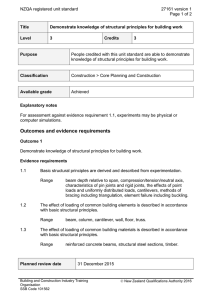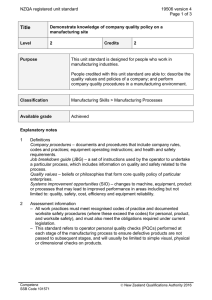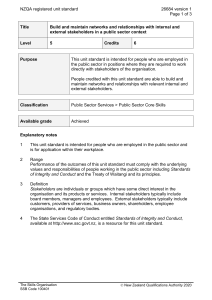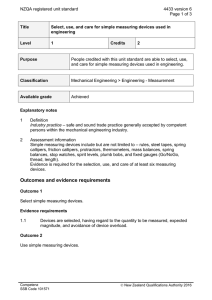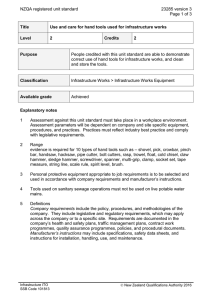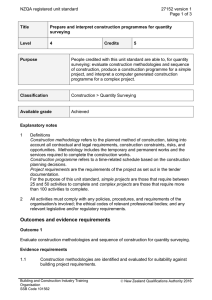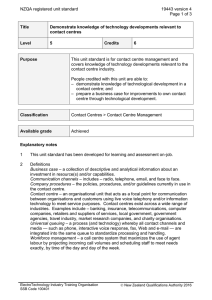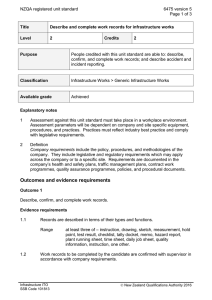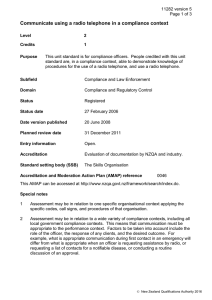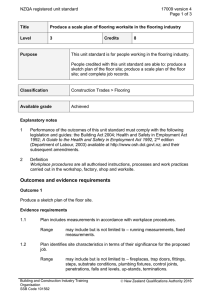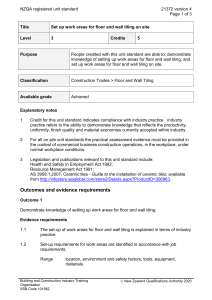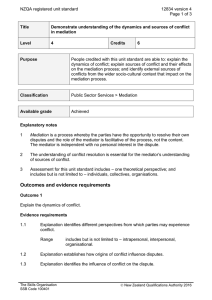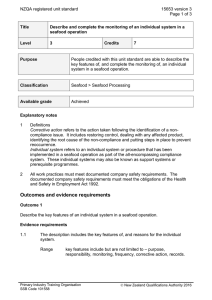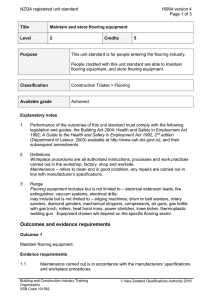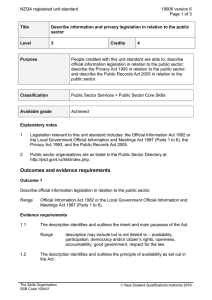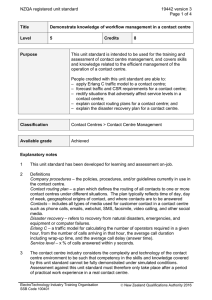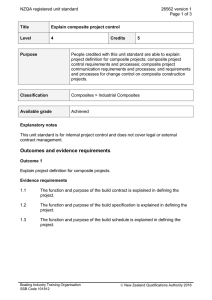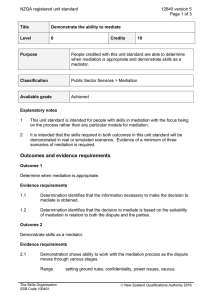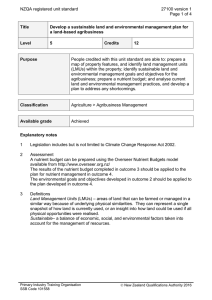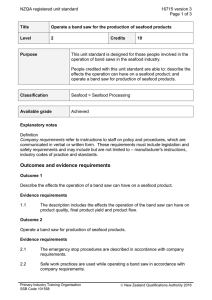NZQA registered unit standard 9663 version 6 Page 1 of 3
advertisement
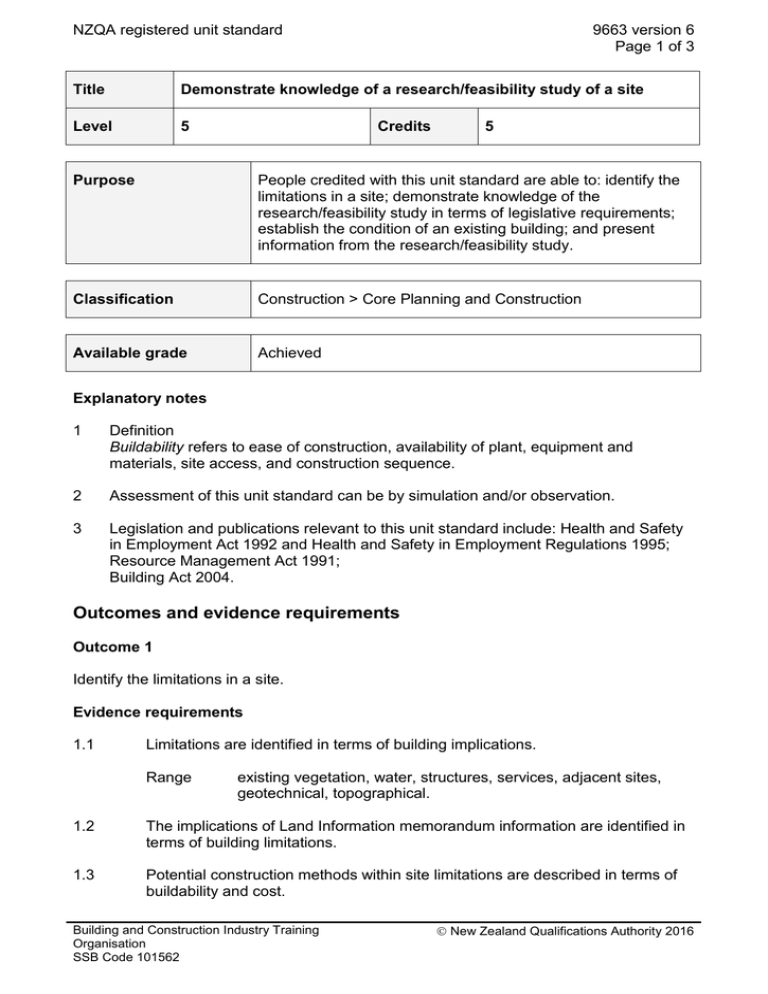
NZQA registered unit standard 9663 version 6 Page 1 of 3 Title Demonstrate knowledge of a research/feasibility study of a site Level 5 Credits 5 Purpose People credited with this unit standard are able to: identify the limitations in a site; demonstrate knowledge of the research/feasibility study in terms of legislative requirements; establish the condition of an existing building; and present information from the research/feasibility study. Classification Construction > Core Planning and Construction Available grade Achieved Explanatory notes 1 Definition Buildability refers to ease of construction, availability of plant, equipment and materials, site access, and construction sequence. 2 Assessment of this unit standard can be by simulation and/or observation. 3 Legislation and publications relevant to this unit standard include: Health and Safety in Employment Act 1992 and Health and Safety in Employment Regulations 1995; Resource Management Act 1991; Building Act 2004. Outcomes and evidence requirements Outcome 1 Identify the limitations in a site. Evidence requirements 1.1 Limitations are identified in terms of building implications. Range existing vegetation, water, structures, services, adjacent sites, geotechnical, topographical. 1.2 The implications of Land Information memorandum information are identified in terms of building limitations. 1.3 Potential construction methods within site limitations are described in terms of buildability and cost. Building and Construction Industry Training Organisation SSB Code 101562 New Zealand Qualifications Authority 2016 NZQA registered unit standard 9663 version 6 Page 2 of 3 Outcome 2 Demonstrate knowledge of the research/feasibility study in terms of legislative requirements. Range Resource Management Act 1991, district plan (proposed and operative). Evidence requirements 2.1 Options are identified in terms of potential site usage. 2.2 The implications of special consents are identified in terms of cost, environment and location. 2.3 The implications of potential developments are identified in legal terms. Outcome 3 Establish the condition of an existing building. Evidence requirements 3.1 The building envelope is described and documented in terms of dimensions. 3.2 The internal layout is described in terms of spaces and their relation to each other. 3.3 Services that can be sighted are located in the internal layout description. 3.4 The building is described in terms of materials and condition. Outcome 4 Present information from the research/feasibility study. Evidence requirements 4.1 Presentation is clear and concise and conveys information in a way that facilitates decision making. Range Planned review date limitations, legislative requirements, existing building condition. 31 December 2015 Building and Construction Industry Training Organisation SSB Code 101562 New Zealand Qualifications Authority 2016 NZQA registered unit standard 9663 version 6 Page 3 of 3 Status information and last date for assessment for superseded versions Process Version Date Last Date for Assessment Registration 1 21 March 1997 31 December 2014 Revision 2 10 December 1997 31 December 2014 Revision 3 7 June 2000 31 December 2014 Review 4 20 March 2003 31 December 2014 Revision 5 19 July 2004 31 December 2014 Review 6 18 March 2011 N/A Accreditation and Moderation Action Plan (AMAP) reference 0048 This AMAP can be accessed at http://www.nzqa.govt.nz/framework/search/index.do. Please note Providers must be granted consent to assess against standards (accredited) by NZQA, or an inter-institutional body with delegated authority for quality assurance, before they can report credits from assessment against unit standards or deliver courses of study leading to that assessment. Industry Training Organisations must be granted consent to assess against standards by NZQA before they can register credits from assessment against unit standards. Providers and Industry Training Organisations, which have been granted consent and which are assessing against unit standards must engage with the moderation system that applies to those standards. Consent requirements and an outline of the moderation system that applies to this standard are outlined in the Accreditation and Moderation Action Plan (AMAP). The AMAP also includes useful information about special requirements for organisations wishing to develop education and training programmes, such as minimum qualifications for tutors and assessors, and special resource requirements. Comments on this unit standard Please contact the Building and Construction Industry Training Organisation national.office@bcito.org.nz if you wish to suggest changes to the content of this unit standard. Building and Construction Industry Training Organisation SSB Code 101562 New Zealand Qualifications Authority 2016
